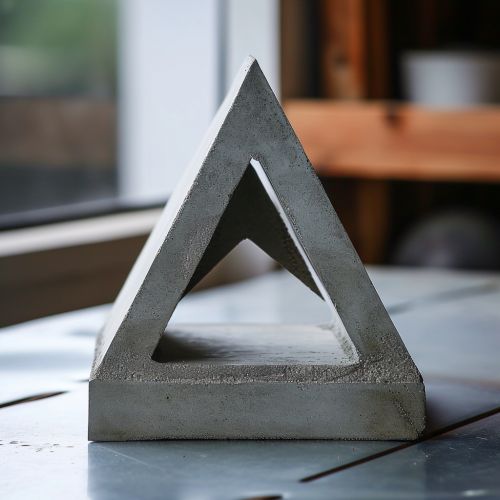Base and Altitude
Definition
In geometry, the terms "base" and "altitude" are used to define specific aspects of a shape or object. The base of a shape is the side or face on which the shape is considered to be standing. The altitude, also known as the height, is the perpendicular distance from the base to the opposite side or vertex of the shape. In a three-dimensional object, the base is usually a face of the object, and the altitude is the perpendicular distance from the base to the opposite face or vertex.


Base
The base of a shape or object can be any side or face, but it is usually the one on which the shape is considered to be standing. For instance, in a triangle, any of the three sides can be considered as the base. However, in common usage, the base of a triangle is usually the side that is horizontal or on the bottom when the triangle is drawn. In a rectangle or square, the base is usually one of the horizontal sides. In a parallelogram or trapezoid, the base is one of the parallel sides. In a polygon, the base is usually one of the sides, but it can also be a diagonal. In a three-dimensional object such as a prism or cylinder, the base is usually one of the faces of the object.
Altitude
The altitude of a shape or object is the perpendicular distance from the base to the opposite side or vertex. In a triangle, the altitude is the line segment drawn from the vertex opposite the base and perpendicular to the base. In a rectangle, square, parallelogram, or trapezoid, the altitude is the perpendicular distance from the base to the opposite side. In a polygon, the altitude is the perpendicular distance from the base to a line parallel to the base through the opposite vertex. In a three-dimensional object such as a prism or cylinder, the altitude is the perpendicular distance from the base to the opposite face or vertex.
Use in Calculations
The base and altitude of a shape are often used in calculations of area and volume. The area of a rectangle is the product of the base and the altitude, and the same formula applies to parallelograms and trapezoids. The area of a triangle is half the product of the base and the altitude. The volume of a prism or cylinder is the product of the base area and the altitude.
Special Cases
In some shapes and objects, the base and altitude have special names. In a cone or pyramid, the altitude is often called the height, and the base is the circle or polygon on which the cone or pyramid stands. In a sphere, the base is undefined, and the altitude is the diameter. In an ellipse, the base is the major axis, and the altitude is the minor axis.
